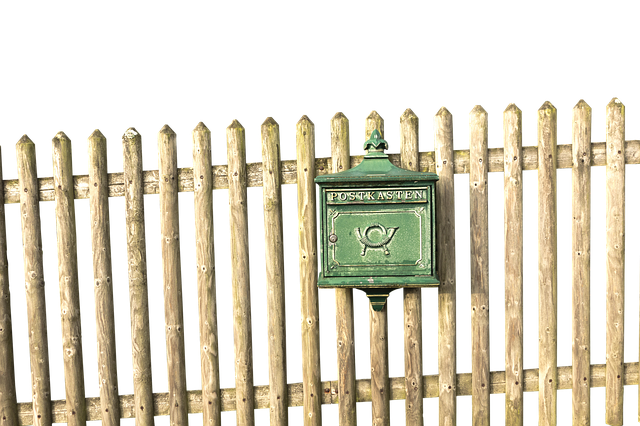For New Bedford, Massachusetts homeowners looking to enhance their outdoor spaces, installing a new fence offers both privacy and aesthetic appeal. This comprehensive guide provides essential DIY tips for navigating the process seamlessly. From understanding suitable fencing options tailored to local conditions to mastering each step from measurement to final touches, we equip you with the knowledge for a successful installation. By following best practices and ensuring proper maintenance, your fence will stand strong for years to come, enhancing your property’s value and beauty.
- Understanding Your Fence Options for New Bedford Properties
- Measuring and Planning Your Fencing Project Step-by-Step
- Preparing the Ground: A Crucial Foundation for Your Fence
- Installing Your Fence: Tools, Materials, and Best Practices
- Final Touches and Maintenance Tips for Longevity
Understanding Your Fence Options for New Bedford Properties
When it comes to fence installation in New Bedford, Massachusetts, homeowners have a variety of options to consider. Wood, vinyl, chain-link, and iron are common materials that each offer unique aesthetics and levels of durability. Understanding the pros and cons of each material is essential for making an informed decision that aligns with your property’s needs and personal preferences.
For instance, wood fences exude a natural charm but require regular maintenance to protect against rot and pests. Vinyl fences, on the other hand, are low-maintenance and come in various styles but may be more prone to damage from extreme weather conditions. Chain-link fences offer security and are ideal for areas requiring a higher level of privacy while iron fences provide both beauty and security with their sturdy construction. Each option has its merits, so taking time to research will ensure you choose the best fit for your New Bedford property.
Measuring and Planning Your Fencing Project Step-by-Step
Before breaking ground on your DIY fence installation, meticulous planning and measuring are paramount to ensure a successful project. Start by identifying the perimeter of your yard or area where the fence will be installed. Use a tape measure to accurately determine the length and width, taking note of any unique features or obstacles like trees, flower beds, or existing structures that might affect the layout. Create a scaled sketch or use online tools to visualize your desired fence placement and style.
Next, decide on the type of fencing material you prefer—wood, vinyl, or chain link—and determine the required posts, rails, and panels based on measurements. Consult local building codes for any regulations regarding fence heights, materials, and set-back requirements specific to New Bedford, Massachusetts. By following these steps, you’ll have a solid plan for your fencing project, paving the way for efficient installation and an aesthetically pleasing finish.
Preparing the Ground: A Crucial Foundation for Your Fence
Preparing the ground is an essential step in DIY fence installation, as it serves as the foundation for your new barrier. Before setting any posts or pouring concrete, ensure the area is level and clear of debris. Remove any grass, weeds, or rocks to create a solid base. This process involves careful measurement and marking to guarantee the fence line is straight and aligned with your property boundaries.
Compaction is key; you want the soil to be firm and stable to support the weight of the fence posts. Use a plate compactor or a heavy roller to compress the soil, ensuring it’s dense enough to prevent post movement over time. This preparation guarantees that your fence stands strong against weather conditions and potential environmental shifts, ensuring longevity and structural integrity.
Installing Your Fence: Tools, Materials, and Best Practices
When it comes to installing your fence, having the right tools and materials is essential for a successful DIY project. For most New Bedford, Massachusetts homes, a wooden or vinyl fence is a popular choice. Gather materials such as posts, rails, fencing panels, concrete for setting the posts, a drill with bits, a level, string, and stakes. These tools will enable you to mark out the fence line accurately, dig holes for the posts, attach the rails and panels securely, and ensure a sturdy, level structure.
Best practices include measuring twice before digging, ensuring proper post spacing, and checking local building codes for height restrictions or permitted fencing materials. It’s crucial to set the posts in concrete to provide stability against weather and ground movement. Additionally, keeping the fence lines straight and parallel will enhance the overall appearance of your new fence, creating a clean, professional look that complements your New Bedford home.
Final Touches and Maintenance Tips for Longevity
After completing the fence installation, it’s important to take care of some final touches that will ensure its longevity. Start by inspecting the entire fence for any loose or damaged components. Tighten all screws and bolts, and replace any broken or missing parts immediately. This step is crucial in maintaining the structural integrity of your fence.
Regular maintenance is key to keeping your new fence in excellent condition. A simple cleaning routine with a garden hose and mild soap can help remove dirt and debris buildup. Additionally, applying a suitable sealant or paint every few years will protect the fence from the elements and extend its lifespan. Remember to keep an eye out for signs of wear and tear and address them promptly to prevent minor issues from becoming major problems.
